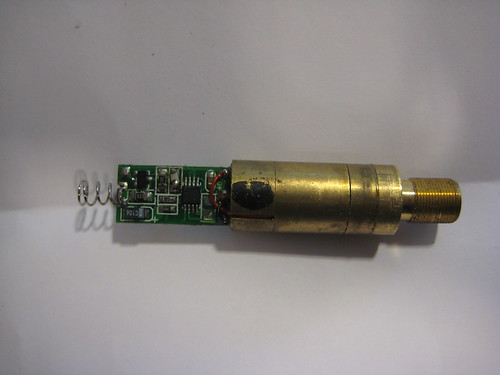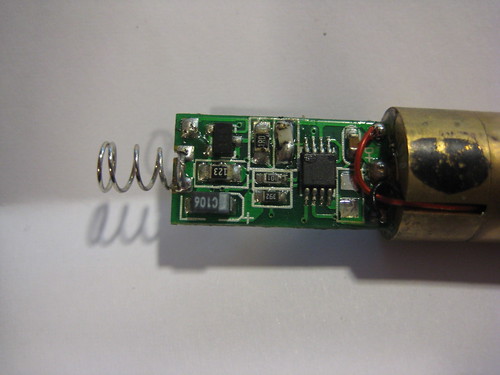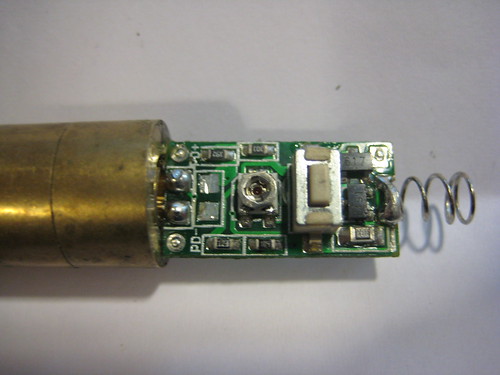Benm
0
- Joined
- Aug 16, 2007
- Messages
- 7,896
- Points
- 113
Update on the above... I opened by DX20, which contains and identical circuit board, so i'd say the only difference between 20 and 30 is KTP efficiency.
I didn't completely retrace the circuit, but i'm assuming its correct and found no errors so far. I did some experiments on the reference voltage at the 431 regulator. Stock, this voltage is 1.32 volts. I yanked it to the negative rail, and the unit stops producing any light as expected. Also, i connected it to the positive rail via a 10k resistor, and the reference voltage rises to 2.31 volts. The strange thing is: It does not make any difference in diode current!
There is obviously something else hindering proper regulation, and as of now i believe it to be a problem with the LA6358 opamp. This component is specced with a minimum supply voltage of 3.0 volts, and and output swing up to Vcc-1.5 volts.
Running of 2 AA cells loaded with 250 mA or so, these specifications are never met. The limitation in output swing could affect the ability of the 'upper' opamp to give sufficient base drive to the 617 transistor - it has to deliver 0.7 volts (Vbe) plus the voltage over the sense (say 0.3 volts) to the transistor.
One solution i see is to connect the 100 ohms base resistor of the 617 to Vcc instead of the output of the duff PD feedback opamp. The circuit might then be unable to reduce drive and blow up the diode, but perhaps this is worth the experiment?
Any insights welcome, and i'll post further analysis results if i do more work on it.
Also: if anyone can provide specifications for the pump diode used, that would be very welcome! With some specs i'd actually know what the diode requires, and i might be more able to hook something up!
I didn't completely retrace the circuit, but i'm assuming its correct and found no errors so far. I did some experiments on the reference voltage at the 431 regulator. Stock, this voltage is 1.32 volts. I yanked it to the negative rail, and the unit stops producing any light as expected. Also, i connected it to the positive rail via a 10k resistor, and the reference voltage rises to 2.31 volts. The strange thing is: It does not make any difference in diode current!
There is obviously something else hindering proper regulation, and as of now i believe it to be a problem with the LA6358 opamp. This component is specced with a minimum supply voltage of 3.0 volts, and and output swing up to Vcc-1.5 volts.
Running of 2 AA cells loaded with 250 mA or so, these specifications are never met. The limitation in output swing could affect the ability of the 'upper' opamp to give sufficient base drive to the 617 transistor - it has to deliver 0.7 volts (Vbe) plus the voltage over the sense (say 0.3 volts) to the transistor.
One solution i see is to connect the 100 ohms base resistor of the 617 to Vcc instead of the output of the duff PD feedback opamp. The circuit might then be unable to reduce drive and blow up the diode, but perhaps this is worth the experiment?
Any insights welcome, and i'll post further analysis results if i do more work on it.
Also: if anyone can provide specifications for the pump diode used, that would be very welcome! With some specs i'd actually know what the diode requires, and i might be more able to hook something up!






